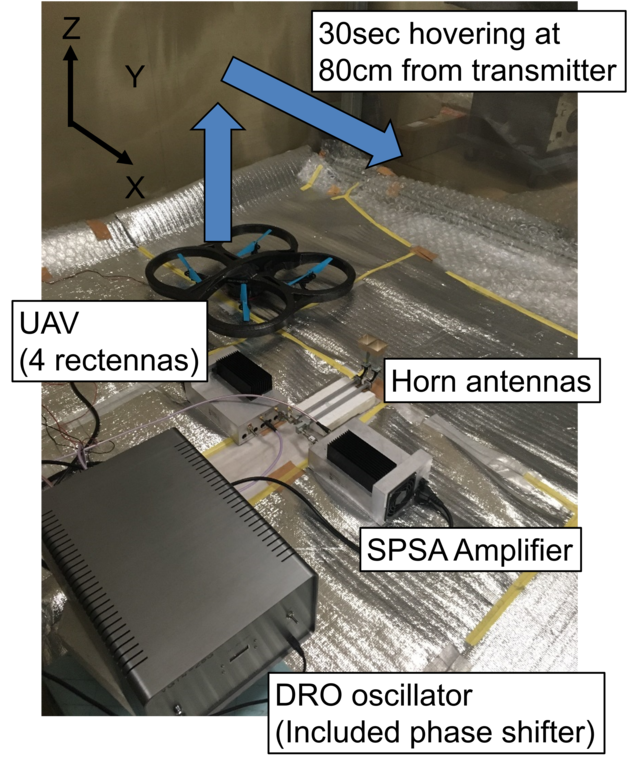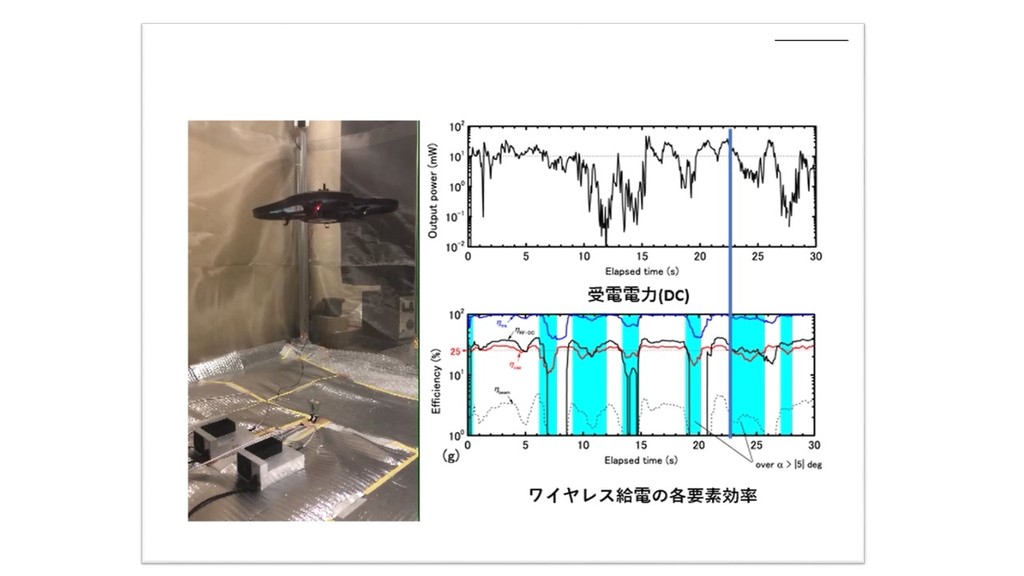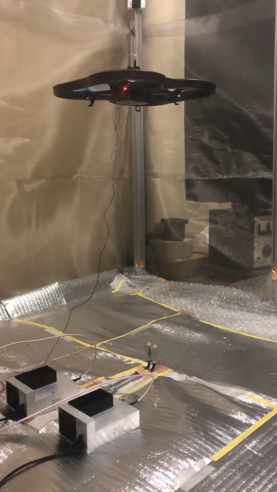・WIRELESS power transmission (WPT) via microwave can drastically improve the flight performance of the aerospace craft.
・We demonstrate microwave-powered flight by using unmanned aerial vehicles (UAVs) to evaluate WPT efficiency for the aerospace craft.
・The resulting total microwave transmission efficiency was 0.43%. The experiment described determines the WPT efficiency for a free-flight object.
Abstract
WIRELESS power transmission (WPT) via microwave has the potential to drastically improve the flight performance of aerospace craft, which require a high-energy-density supply when in flight. WPT technology can provide rockets with high specific thrust (low fuel consumption) without the limitations imposed by the chemical energy provided by conventional propellants. However, if microwaves dissipate before reaching the rocket, then the overall propulsion efficiency will be very low, regardless of the efficiency of the rocket. In previous experiments, the overall efficiency of WPT for microwave rockets and the total propulsion system efficiency was 14 and 6%, respectively, using a fixed-position rocket. The next step is the demonstration of free flight to determine the total efficiency of the rocket (i.e., including the WPT). However, the flight demonstration requires an over-MW-class continuous-wave microwave source, which is hard to procure and difficult to use in this level of concept study. We, therefore, demonstrate microwave-powered flight by using unmanned aerial vehicles (UAVs) to evaluate WPT efficiency for the aerospace craft.
A previous study developed a prototype of a 28 GHz microwave power transfer system for UAVs consisting of an AR. Drone 2.0 (Parrot Inc.), which uses a proportional-integral-differential (PID) algorithm for autonomously controlled systems, and an indoor GPS to direct the high-power microwave radiation in a shielded room. The operating frequency of 28 GHz is the same as in the previous rocket demonstration, and the flight altitude is also the same.
The resulting total microwave transmission efficiency was 0.43%. The experiment described determines the WPT efficiency for a free-flight object. Improving the tracking system and increasing the transmission distance is a subject for future investigation into beamed-energy propulsion.
Benefit
We developed an evaluation system of WPT, 28 GHz microwave power transfer system for UAVs with a beam-tracking system that synchronizes the UAV position and with the microwave phase tuned to improve the power transmission efficiency.
Market Application
・Microwave Rocket
・Microwave powered aircraft
・long range wireless power transmission
Publications
https://arc.aiaa.org/doi/abs/10.2514/1.A35044?journalCode=jsr
Other
https://www.tsukuba.ac.jp/en/research-news/20210707140100.html



